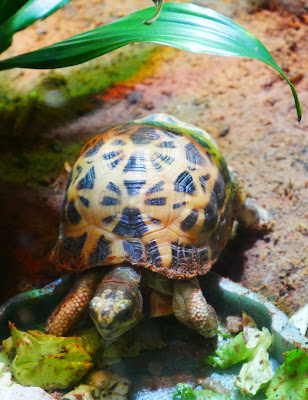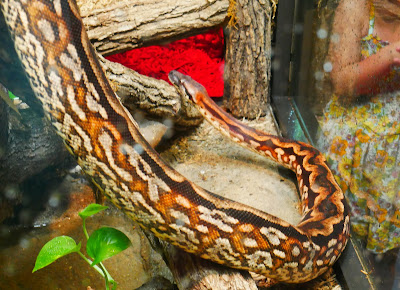Nevertheless, I patiently waited for opportunities to admire and study the critters, and enjoyed that (amphibian, reptilian, and mammalian...) The history behind this building is also one that I love. Dr. Roger Conant was one of the greatest Herpetologists ever--and now that you've read that sentence, I dare to say, you know the name of one Herpetologist! They are a niche celebrity. Conant was born in 1909 in a small town in New York, and after his father died his mother moved them to New Jersey. When he was a teenager, he took a job at a local zoo, and as they say "that's how it all began!"
At the age of 20, he took a job at the Toledo Zoo in Ohio to be Curator of Reptiles, and soon thereafter rose to General Curator of all animals. He was leading the Toledo Zoo, when in 1933 the WPA broke ground on their amazing Reptile House which was finished in 1934 and still is fully functional and beautiful today. In 1935, he returned east and took the position of Curator of Reptiles at the Philadelphia Zoo. He remained in the employment of the Philadelphia Zoo for the next 38 years spending the last 5 1967-1973 as it's Director. During his tenure he continued his research into Reptiles with a focus on snakes. He has two species named after him. He was a prolific writer penning 240 articles and 12 books include the first edition of Peterson's "A Field Guide to Reptiles and Amphibians of Eastern and Central North America" in 1958. So great was his contribution that even the current edition lists him as co-author. In 2003, Dr. Conant died.
He led the design of the Philadelphia Zoo's Reptile and Amphibian House which first opened in 1971. It was completely renovated in 1998; however, the majority of the work were upgrades to plumbing, electrical, HVAC and behind the scenes aspects. One of my favorite things is that all the habitats include LIVE PLANTS that are cultivated and replaced as needed. And it's not just about creating a better visual for the guest, but a better habitat for the animals.
I found this floor plan for the building some years ago on line. I believe the labeling was something I added (black letters) before saving it as a JPG file. Off the upper exit to the right is a large exterior habitat for the Aldabra Tortoises (I believe I miss-identified the Tortoises in the previous post from 2014 as Galapagos) to graze in when the temps are amenable. Aldabra Tortoises share one very interesting characteristic with the Galapagos Tortoise, both evolved on remote archipelagos. Aldabras are native to the Seychelles in the Indian Ocean, Also, on this visit the Bumblebee PD frogs were replaced by Green and Black PD frogs, and I don't recall seeing any shingleback skink, but perhaps they just weren't out or visible. Some of what I did see:
The southern entrance (the one at the top of the floor plans)
The Aldabra Tortoise Field. There were 4 tortoises that I spotted, but a docent said they had 12 in all!
ALDABRA TORTOISE
Aldabrachelys gigantea
Conservation Status: Vulnerable
GREEN ANACONDA
Eunectes murinus
Conservation Status: Least Concerned
MEXICAN BEADED LIZARD
Heloderma horridum
Conservation Status: Least Concerned
WEBER'S SAILFIN LIZARD
Hydrosaurus weberi
Conservation Status: Vulnerable
EMERALD TREE BOA
Corallus caninus
Conservation Status: Least Concerned
COMMON SPIDER TORTOISE
Pyxis arachnoides
Conservation Status: Critically Endangered
GREEN AND BLACK POISON DART FROG
Dendrobates auratus
Conservation Status: Least Concerned
CLIMBING MANTELLA [left]
Mantella laevigata
Conservation Status: Least Concerned
and
GREEN MANTELLA [right]
Mantella viridis
Conservation Status: Endangered
MADAGASCAR GROUND BOA
Acrantophis madagascariensis
Conservation Status: Least Concerned
I must confess I had never seen a Madagascar Ground Boa before, and I was captivated by its beauty; however, this little girl didn't seem to share any of my wonder. Verdict? Unimpressed!
VIETNAMESE MOSSY FROG
Theloderma corticale
Conservation Status: Least Concerned















No comments:
Post a Comment